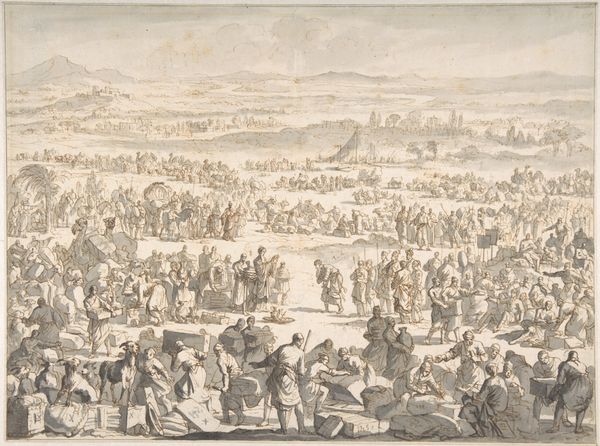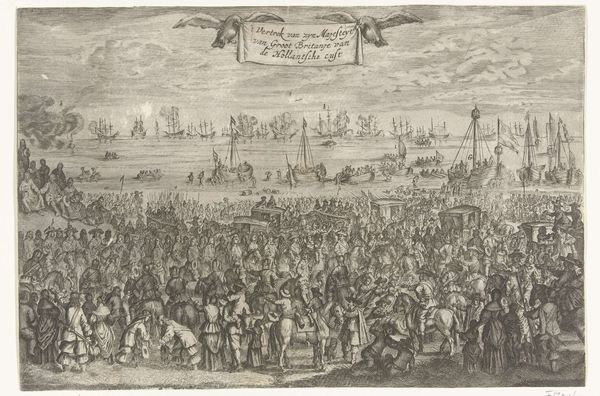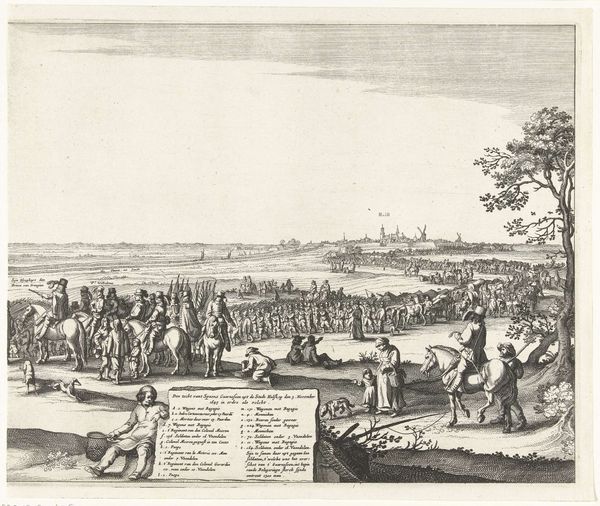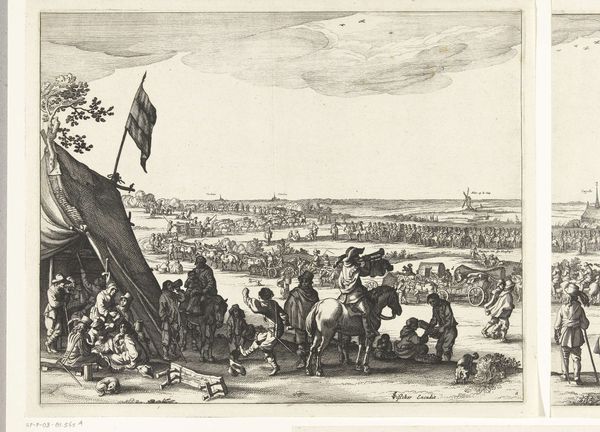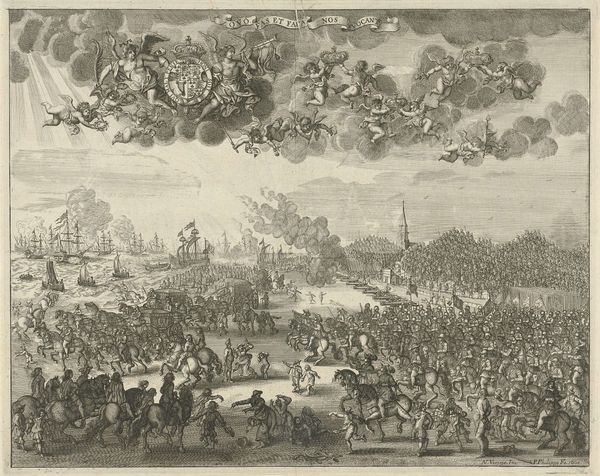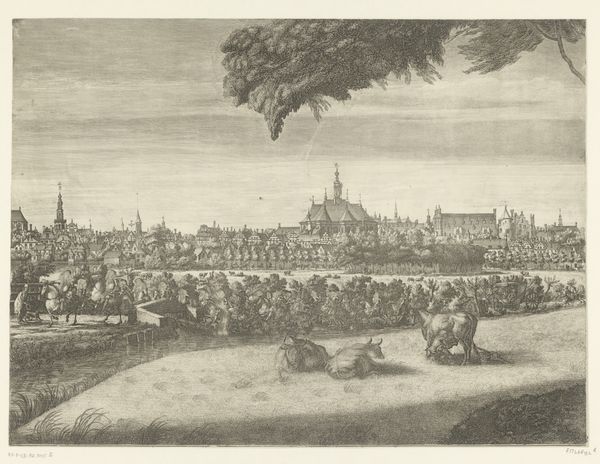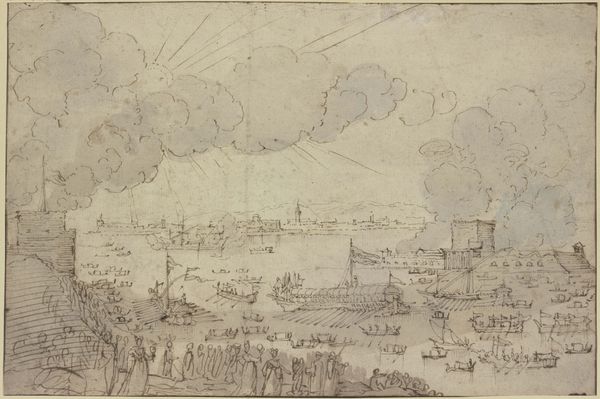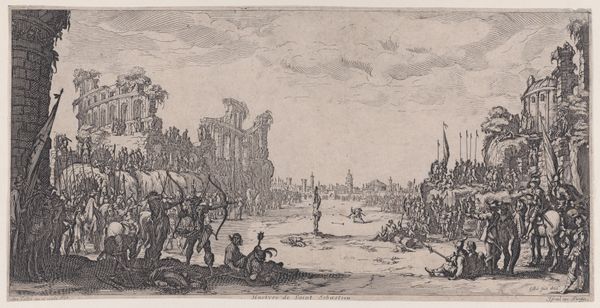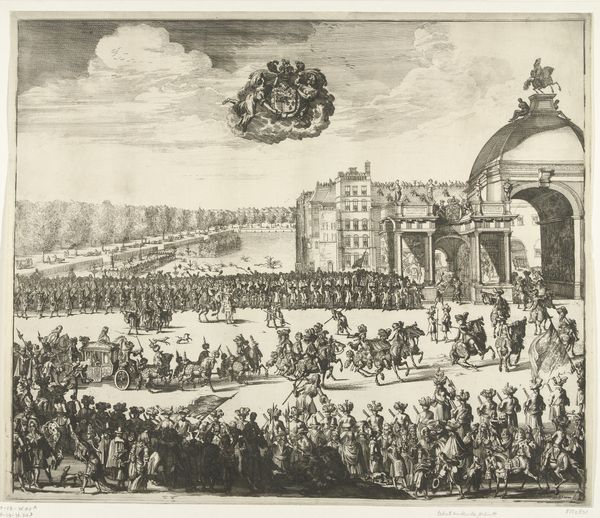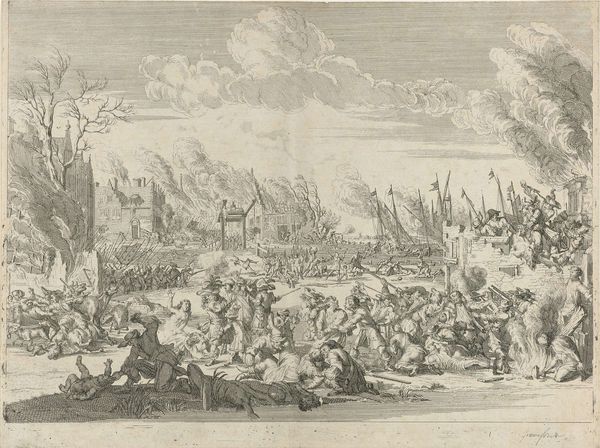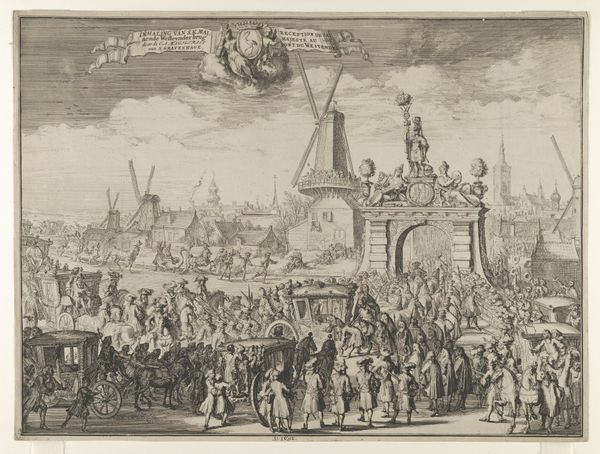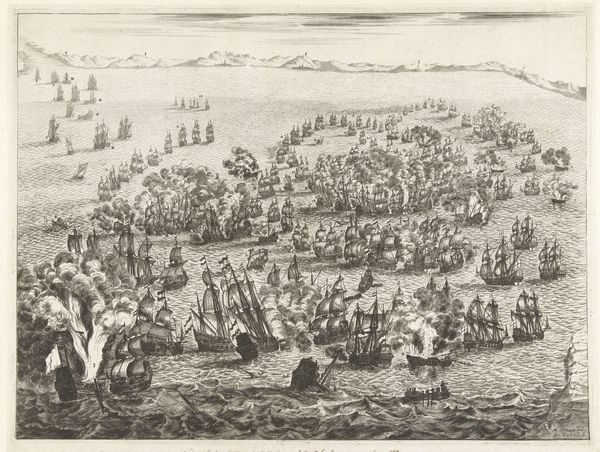
The Mock Battle between the Weavers' and the Dyers' Guilds on the Arno in Florence on 25 July 1619 after 1619
0:00
0:00
oil-paint, wood
#
portrait
#
baroque
#
ship
#
oil-paint
#
landscape
#
oil painting
#
wood
#
cityscape
#
genre-painting
#
history-painting
#
building
Dimensions: 56.5 x 122.0 cm
Copyright: Public Domain
Editor: Here we have "The Mock Battle between the Weavers' and the Dyers' Guilds on the Arno in Florence on 25 July 1619," painted after the event by an anonymous artist. It’s an oil on wood panel. The sheer scope is captivating, almost like a stage production set against this sprawling cityscape. What grabs your attention most in this work? Curator: I am struck by the artist's management of space. Note the calculated recession from the foreground figures to the distant cityscape, all achieved through subtle modulations in tone and scale. The two bridges create very interesting transversal axes across the scene. The artist’s strategic positioning of light and shadow directs the eye through the painting and generates rhythm. Editor: I see what you mean! The light definitely guides my eyes across the scene. How do you see the guilds featuring in this? Curator: Focus on the central island and the river itself. Observe the clusters of vessels engaged in simulated combat. These are not haphazard arrangements; consider how the painter has structured the scene into opposing factions, with each boat's position contributing to an overall sense of orchestrated chaos. Note the color contrasts and dynamic brushwork, injecting drama into what might otherwise be a static scene. How do those vessels strike you? Editor: Now I notice how they’re organized into two distinct groups facing each other. It’s like the artist carefully planned out a very detailed scene for this painting. What is it about the guilds that resonates with you? Curator: Guilds often serve to organize craftsmen but more interestingly they represent the idea of binary opposition; masters and apprentices, local products vs foreign imports etcetera. By extension, those vessels represent conflict through their division, echoing themes present throughout art history. What is your takeaway from all of this? Editor: It's fascinating how much you can uncover by looking closely at the formal aspects, and not so much at the historical subject matter of it. Now, seeing the structural composition makes me appreciate the whole work in a new way.
Comments
No comments
Be the first to comment and join the conversation on the ultimate creative platform.
